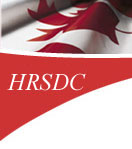
| Français | Contact Us | Help | Search | Canada Site |
| About Us | Services Where You Live | Policies & Programs | A-Z Index | Home |

Understanding the Early Years Early Childhood Development in Niagara Falls, Ontario - June 2003 |
|
|
|
|
Services for:
|
V. Looking forward
| Previous | Contents |
Overall, the children of Niagara Falls showed strong signs of positive development and readiness for learning. The community is composed of high quality, safe, and very stable neighbourhoods. The community has relatively good access to resources for children, and families make use of them. These factors undoubtedly contribute to Niagara Falls's success in preparing children for school.
Although many Canadian communities share at least some of these broader characteristics, each community also exhibits a variety of unique features that sets it apart from others.
This is one of the reasons community-based research is so important. Research allows a community to understand how well its youngest citizens are developing and lends insight into how the obtained results came about. Investments for families and children, as well as for children's development, can be monitored over time so that effectiveness and efficiency of community effort can be improved.
Niagara Falls can take pride in the success of its youngest children; however, there is room for improvement, particularly in the area of behavioural development. The prevalence of hyperactive children is at least one-and-a-half times national norms. It should be noted that hyperactivity scores are based on parent responses and not on a professional assessment of the child. Given the high prevalence of low-income and single-parent families, one might expect to find somewhat higher rates of behavioural problems. The community can take pride in its ability to protect its children from other potentially negative outcomes associated with these background characteristics.
A. What makes Niagara Falls unique?
Niagara Falls has a high percentage of single parent families and is largely a medium- to low-SES community. The poorest neighbourhoods are located in the central and southern areas of the community. Despite having many areas of low socio-economic status, Niagara Falls has strong neighbourhoods, with high levels of stability and social support. Parents considered their neighbourhoods to be clean and safe, offering quality schools and nurseries, and a range of facilities for young children. These factors likely contribute to Niagara Falls's success on the markers of cognitive development and communication skills.
B. Summary
Niagara Falls is one of thirteen communities participating in the UEY initiative. Through this initiative, valuable lessons are being learned about the needs and strengths of communities with different economic, social, and physical characteristics. With respect to early childhood development, we are also learning how communities are working to improve children's outcomes, as well as the relative success (or lack thereof) of their efforts.
Communities will determine how their citizens will work together to improve children's early developmental outcomes based on research evidence. Results from the UEY initiative will inform discussion within communities for future action plans.
At the same time, it is a societal responsibility —of governments, educators, community agencies, neighbourhoods, and families — to make sure improvements take place for all children. Strategies that require the community to look at itself as a whole community, as well as neighbourhood by neighbourhood, will likely have more enduring effects. UEY is able to provide research results to support both.
For example, neighbourhood by neighbourhood, families may improve their outdoor play-spaces, and on a community level, concerned agencies and organizations could improve community-wide strategies to integrate disadvantaged groups. As communities document their efforts, as well as their results, effective practices will be identified.
Any community's response must consider its unique features. The importance of a coordinated approach involving families, teachers, and all community members must be emphasized because each has been shown to be important in enhancing child development. Support for families with children from the larger community network is critical. Governments, community institutions, schools, and the voluntary sector in Niagara Falls must continue to work together, as each can make a valuable and important contribution.
| Previous | Contents |
| Last modified : 2005-01-11 | top | Important Notices |